Top speed 368 km/h Length 9.5 m First flight June 1936 | Wingspan 11 m Number of seats 2 | |
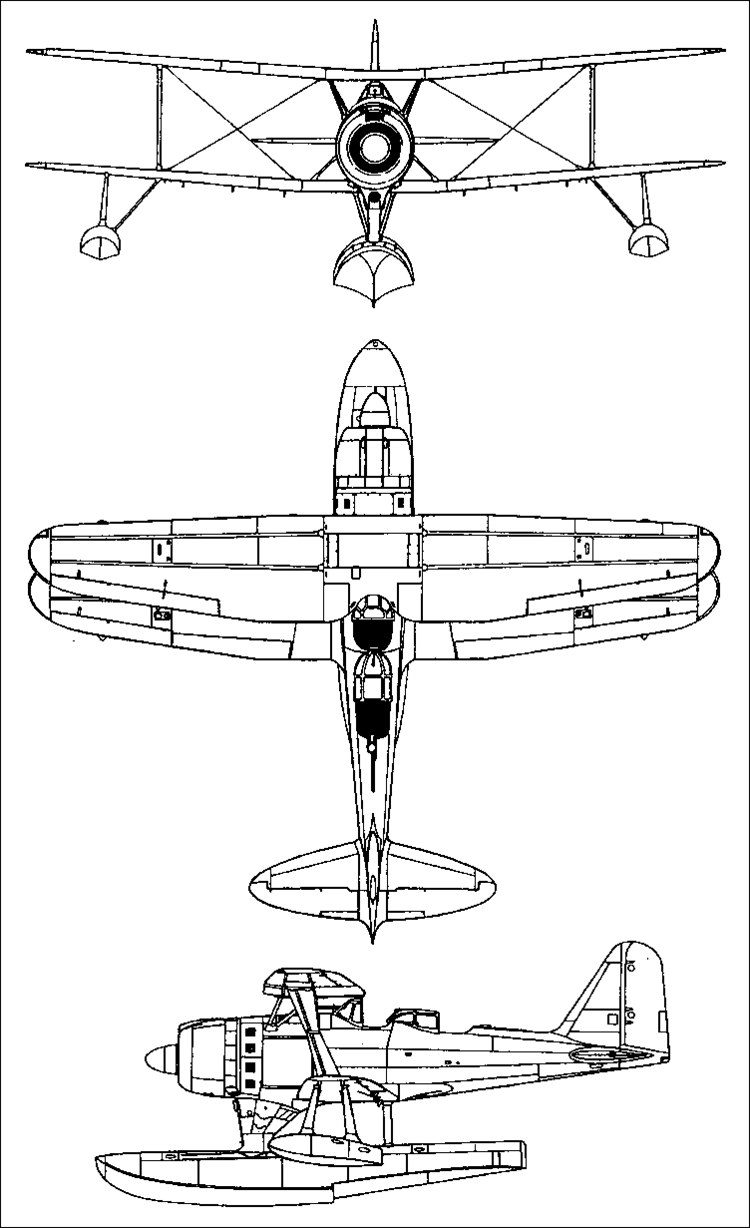 | ||
Manufacturer Mitsubishi Aircraft Company Similar Mitsubishi A6M Zero, Mitsubishi G4M, Mitsubishi A5M | ||
War thunder mitsubishi f1m
The Mitsubishi F1M (Allied reporting name "Pete") was a Japanese reconnaissance floatplane of World War II. It was the last biplane type of the Imperial Japanese Navy, with 1,118 built between 1936 and 1944. The Navy designation was "Type Zero Observation Seaplane" (零式水上観測機), not to be confused with the Type Zero Carrier Fighter or the Type Zero Reconnaissance Seaplane.
Contents
- War thunder mitsubishi f1m
- Design and development
- Operational history
- Variants
- Operators
- Specifications F1M2
- References
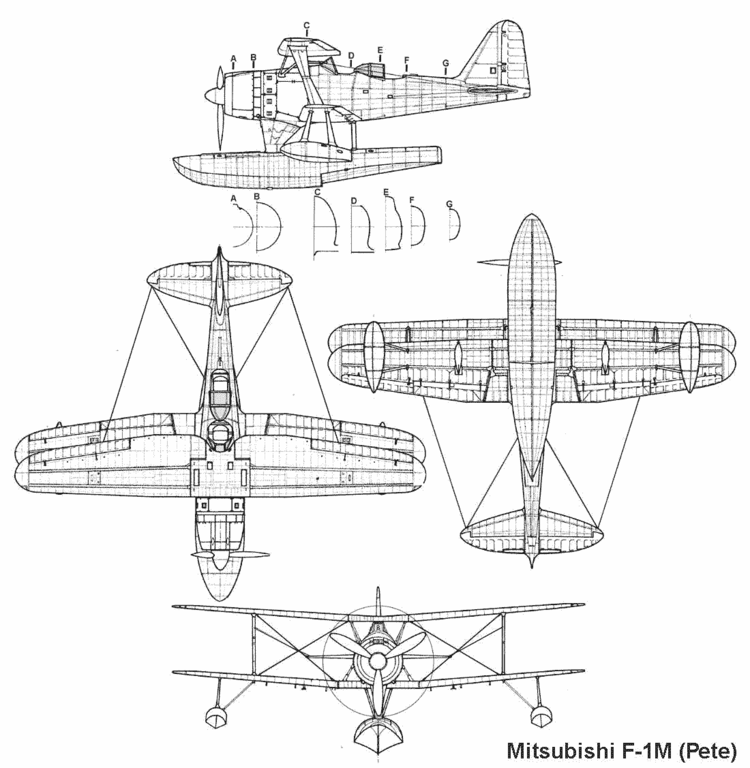
Design and development
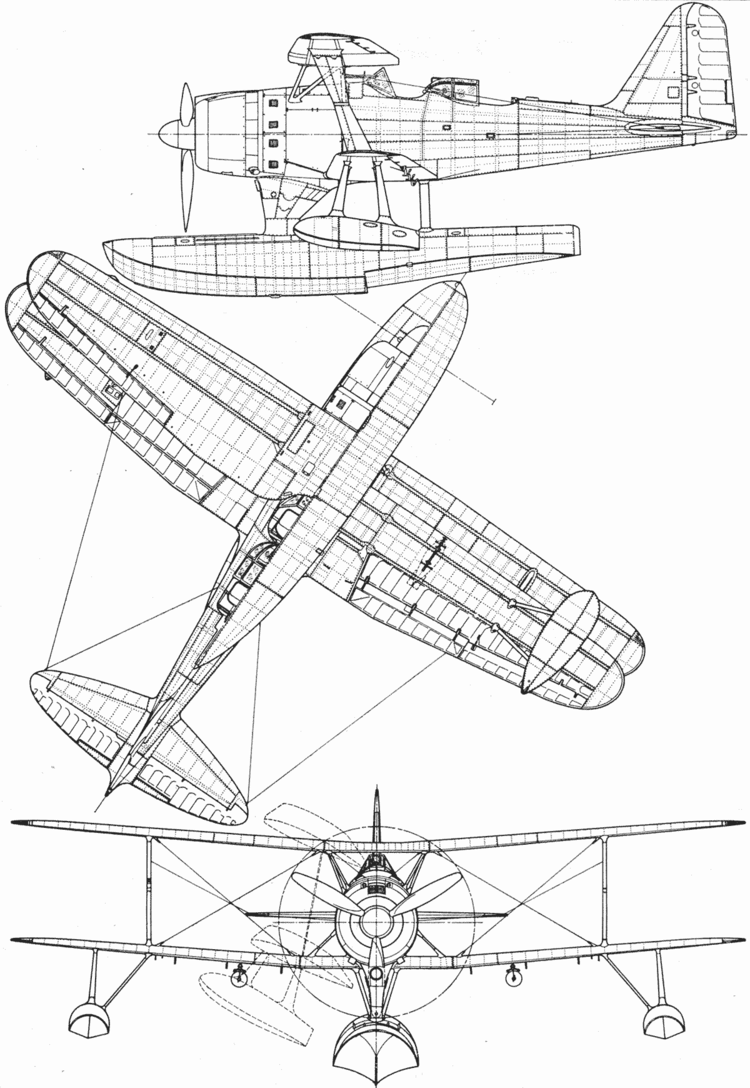
The F1M1 was powered by the Nakajima Hikari MK1 radial engine, delivering 611 kW (820 hp), a maximum speed of 368 km/h (230 mph) and operating range of up to 1,072 km (670 mi) (when overloaded). It provided the Imperial Japanese Navy with a very versatile operations platform.
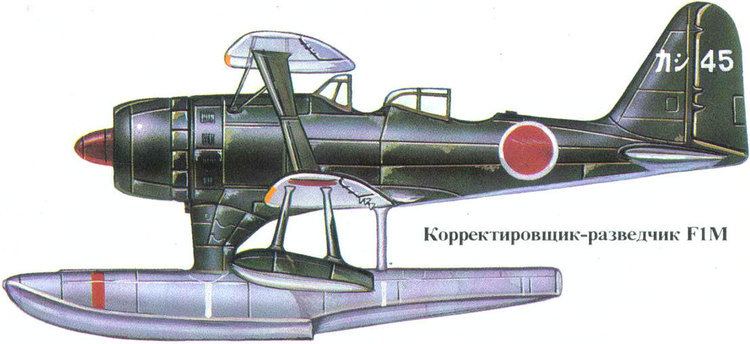
The F1M was armed with a maximum of three 7.7 mm (.303 in) machine guns (two fixed forward-firing and one flexible rear-firing) with provision for two 60 kg (132 lb) bombs.
Operational history
The F1M was originally built as a catapult-launched reconnaissance float plane, specializing in gunnery spotting. The "Pete" took on a number of local roles including convoy escort, bomber, anti-submarine, maritime patrol, rescue, transport, and anti-shipping strike; for example sinking Motor Torpedo Boat PT-34 on 9 April 1942. The type was also used as an area-defense fighter and fought dogfights in the Aleutians, the Solomons and several other theaters. In the New Guinea front, it was often used in aerial combat with the Allied bombers and Allied fighters.
Variants
Operators
Specifications (F1M2)
Data from Japanese Aircraft of the Pacific War
General characteristics
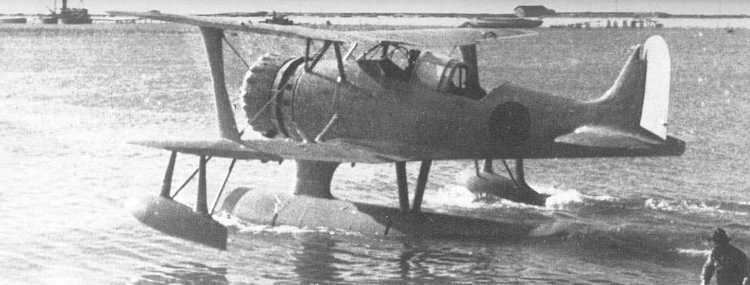
Performance
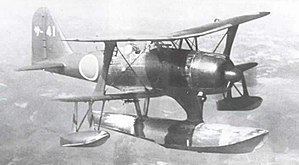
Armament
